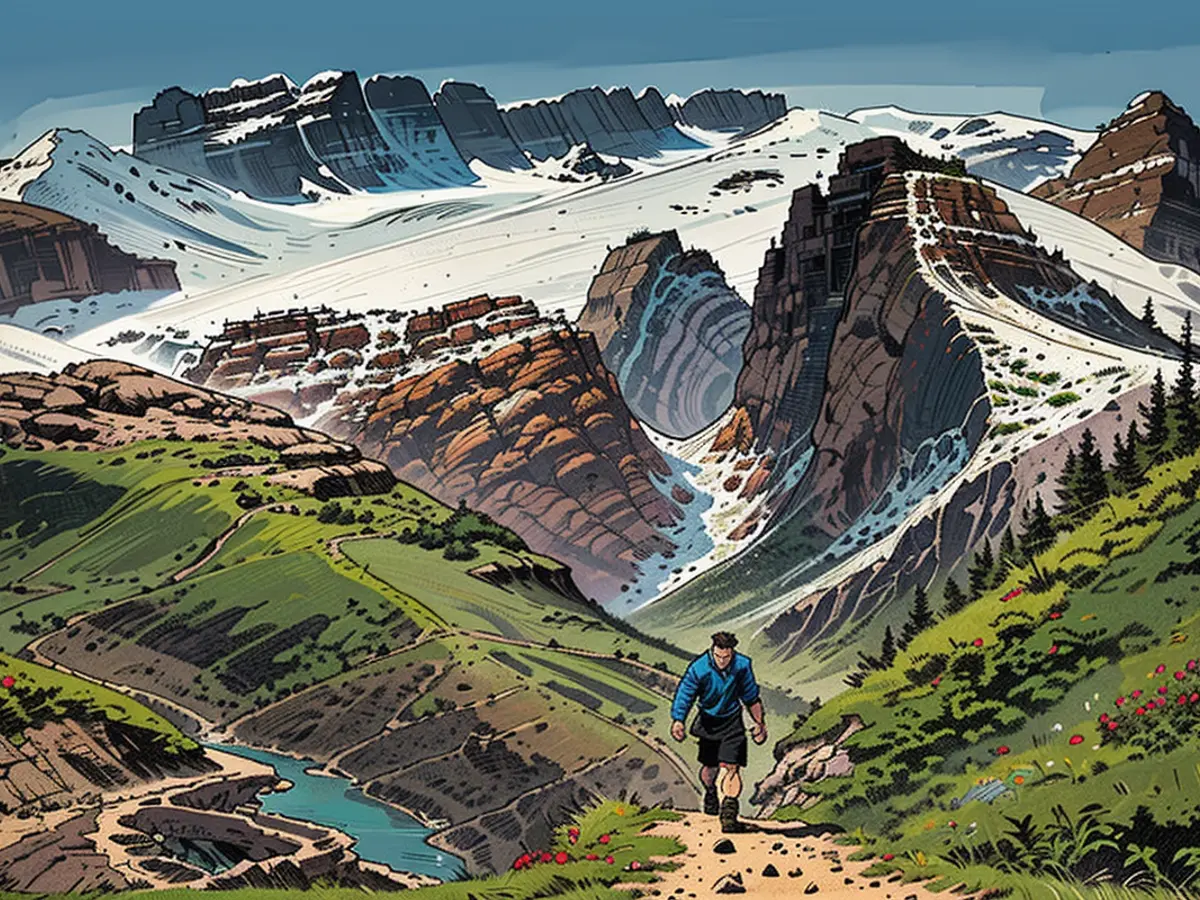How dangerous has it become in the Alps?
Two years ago, on July 3rd around 1:30 PM, a landslide occurred along a popular route at the Marmolada in the Dolomites, claiming the lives of 11 mountain climbers. It was reported that climate change significantly contributed to this tragedy. ntv.de interviews Sudtirol and internationally renowned glaciologist and climate researcher Georg Kaser about how glacier retreats look now and what has changed in the mountains.
ntv.de: Can we still hike on glaciers in the Alps?
Georg Kaser: Yes, for now, but in a few decades, the glaciers in the Eastern Alps, and most in the Western Alps as well, will have largely disappeared. Climbing on ice will then only be possible in a few, high-altitude and shady gullies. In high, shady depressions, the ice will be covered in debris and the rest of the glacier will have melted.
What should hikers pay attention to today in glacier areas that wasn't an issue before 30 years ago?
Once hikers are on the ice, walking on it isn't much different than it was before 30 years ago. The most difficult and dangerous part is still the transition from the snow-covered, or crevasse-free, area to the glacier tongue and then from the ice to the rocky terrain near the summit. This was also the case before 30 years ago, but the glacier edges are changing rapidly and significantly at the bottom and top, making these transitions very complicated and making it difficult to create new routes and approaches. In the mountain slopes, the disappearance of the ice exposes loose rock material and increases the risk of rockfall. Of course, the approaches from the hut, cable car, or valley to the glaciers have also become longer and more strenuous.
Are the rocks more crumbly today?
Not necessarily. Many rock faces and gullies were still ice-covered before 10-20 years ago and therefore relatively easy to climb or cross. Under the melting ice, not only solid rock but also centuries-old, loose material comes to the surface. This increases the risk of rockfall, as well as rockfalls and landslides. It will take several decades for this terrain to stabilize. In the case of unstable rock formations, the ice-free terrain will remain unstable.
Should we be more careful about where we step today?
Yes, especially near the glacier edges. The difficulty of hiking on the ice depends on the ice conditions, which are weather-dependent. Warm, wet weather can make the glacier surface very smooth, while snow can hide cracks.
Why are glacier lakes dangerous?
Glacier lakes can be dangerous because they can suddenly drain, causing a flood. This can happen when the glacier dam holding back the lake breaks, releasing a large amount of water in a short time. This can lead to flash floods, which can be very dangerous for people and infrastructure in the valley below.
"Glacier lakes" are often only temporary water accumulations in the glacier forefield, at the glacier edges, or on a glacier itself. Glacier forefield lakes form when a glacier retreats, either behind a moraine or in a melting, shrinking depression in the former glacier bed. They can be long-lasting, but they can also suddenly burst, when the damming moraine no longer holds the water pressure. This is a relatively common and dangerous phenomenon in the Himalayas and the Andes. The consequence are so-called GLOFs (glacier lake outburst floods) with often catastrophic effects downstream. In the Alps, such events were frequent during the Little Ice Age. Lakes on glacier edges and on glaciers usually form in the spring and break almost always in the summer.
Can glacier lakes burst in our latitudes?
Yes, they can. For example, there is the annual forming lake on the Swiss Gornerglacier above Zermatt in the Monte Rosa Massif. The lake forms at the confluence of Gorner- and Grenzgletscher, where meltwater collects and then usually finds a sudden way through the ice and into the valley.
Was a glacier lake the cause of the misfortune on Marmolada?
No, there was no lake involved. However, it is very likely that meltwater had accumulated locally at the glacier bed, which triggered the accelerated ice avalanche. But it was mainly the exceptionally long-lasting and high atmospheric temperatures that had destabilized the ice on this slope. A consequence of human-induced climate change. An Italian colleague described the situation very nicely and aptly. He compared it to the "ghiacciolo" - the colorful and very popular Italian water ice. When you take it out of the refrigerator, it is hard, firm and brittle. Initially, you can hardly bite into it. But on a hot summer day, you have to eat it quickly, or it will suddenly break into soft, crumbly pieces. Something similar happened at Marmolada two years ago.
Can such an accident happen again?
Glacier avalanches like the one on Marmolada are not entirely unusual with the strong glacier retreat in the advancing climate change. Similar glacier avalanches will also occur in the near future, although with the disappearance of the glaciers, they will become increasingly rare and eventually no longer exist. Most events take place far from popular routes. The glacier avalanche on Marmolada, however, hit a popular mountain climbing route at the exact moment when so many people were on it. I would not say that such a thing will never happen again, but the likelihood that it will hit a popular route again is low.
Interview with Georg Kaser conducted by Andrea Affaticati.
Ntv.de: How has climate change impacted the Alps' glaciers?Georg Kaser: Climate change has significantly contributed to the rapid retreat of glaciers in the Alps, leading to shorter and less accessible glacier hiking routes.
What types of risks should hikers be aware of in glacier areas due to climate change?As glaciers retreat, hikers may encounter unstable terrain, increased risk of rockfall, and more challenging transitions between snow, ice, and rocky areas, necessitating more careful navigation and route planning.







